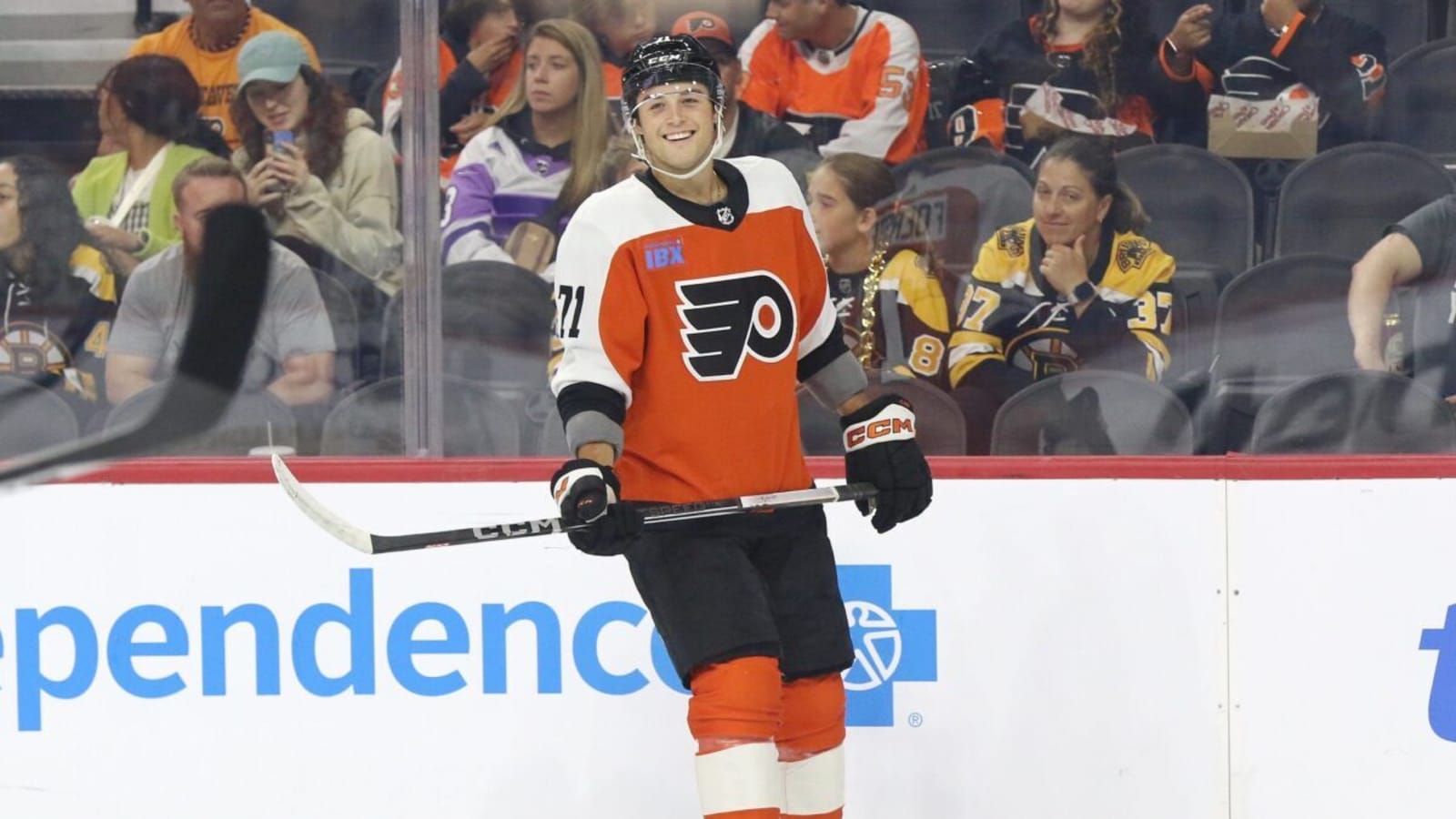
Despite having three head coaches since the 2024–25 season, one constant has remained for the Philadelphia Flyers: their third line. The trio of Tyson Foerster, Noah Cates, and Bobby Brink has been inseparable, providing a spark at both ends of the ice.
The results have been so impressive at 5-on-5 that they even make up a power-play unit. It’s a testament to their chemistry.
As good as the trio has been, though, the Flyers should look to disband it. Specifically, Foerster has earned a promotion to the top line. His tools have been shining this season, and giving him a role boost could raise the team’s ceiling significantly.
Why Foerster Needs a Promotion
Before the season started, I was on the “Foerster should be on the first line” train. He has the most tools of any left-winger on the team, combining a high-end shot with a puck-battle presence and two-way play. The only downsides to his game are his pace and playmaking.
Foerster is the Flyers’ best pure shooter, able to score from a variety of areas—it’s unlike anyone else on the roster, sans Matvei Michkov. The 23-year-old’s shooting ability has been apparent on the man advantage, where he gets open looks and fires the puck with precision.
At 5-on-5, you will often find Foerster winning puck battles. He strives to keep plays alive offensively and is an excellent presence defensively. While Cates and Brink have become capable offensive contributors in their own right, Foerster is the real X-factor on that line. He was a 2020 first-round pick for a reason.
The Flyers have three reliable lines right now, with Foerster-Cates-Brink arguably being the most consistent (who would want to change that?). But as good as his two linemates have been, Foerster is starting to separate himself from the pack. He deserves an opportunity with the big guns.
If Foerster starts to play alongside forwards such as Travis Konecny, Matvei Michkov, and Trevor Zegras, his offensive potential can be unlocked while also maintaining good defensive habits. He’ll get more open looks, able to frequently use his shot not just on the power play, but at 5-on-5.
Although it’s a small sample size, Foerster’s 5-on-5 numbers away from the Cates line are pretty remarkable. In just 8:07 of ice time, he has outscored opponents 3–0 and has a 95.95% expected goal share. Sure, that’s an unsustainable amount of pucks going into the net, but he is outright dominating when paired with the likes of Konecny, Michkov, and Zegras (over a 70% expected goal share, 1–0 goal differential with each of them). A full-time partnership could go a long way.
Cates and Brink Can Mesh with Anyone
The other side of this is Cates and Brink. How would they do without perhaps the most important member of the line? Well, my assumption is that they can do their thing with anyone.
In a 60-minute sample since last season, a Cates-Brink duo without Foerster has a 57.06% expected goal share. It’s being outscored 3–1, but incredibly poor puck luck (.850 PDO, learn what that means here) is the culprit.
The idea that Cates and Brink could work with anyone isn’t based on analytics, though. They are both strong two-way players who can cycle and capitalize on rush chances. A younger, more offensively inclined forward who needs more ice time, such as Nikita Grebenkin, could mesh really well with players like that.
Promoting Foerster to the first line, or at least the top six, is a win-win for the Flyers. They get to see what the 23-year-old winger can do with more talented linemates and better usage, while the same can be applied to someone like Grebenkin, who has been stapled to the fourth line (Christian Dvorak would take his place, in this scenario). In a rebuild, the Orange and Black should give its young players a chance to shine.
Stats courtesy of Natural Stat Trick
More must-reads:
- Penguins have to consider drastic changes after blowing yet another huge lead
- Quinn Hughes makes immediate impact, scores goal in debut with Wild
- The '2025-26 bowl game host cities' quiz
Breaking News
Trending News
Customize Your Newsletter
 +
+
Get the latest news and rumors, customized to your favorite sports and teams. Emailed daily. Always free!








